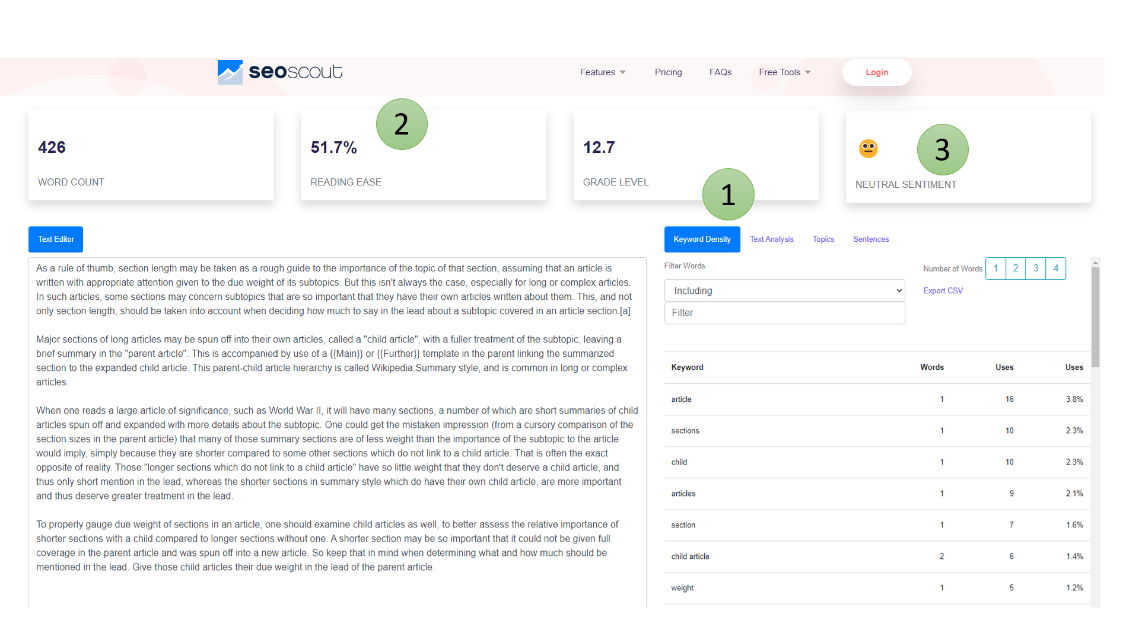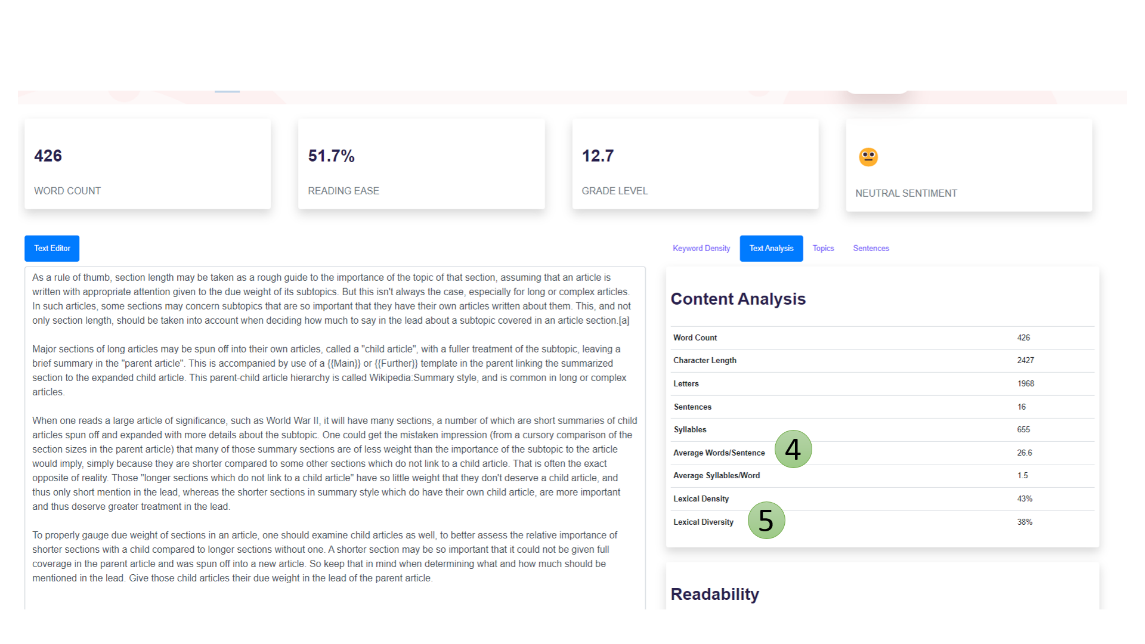- Home
- Lesson Ideas
- SEO Scout in a Writing Task: Scouting Out the Way to Write a Lead Section in a Wikipedia Article
SEO Scout in a Writing Task: Scouting Out the Way to Write a Lead Section in a Wikipedia Article
Thonburi, Bangkok, Thailand. His interests include innovations in English language teaching, strategies for language learning and language use, and innovative curriculum. He co-created the hobby course and the review course within the languaging curriculum with his colleague https://solatlc.wixsite.com/languaging. Email: ronnakrit.ran@mail.kmutt.ac.th
Background
The lesson focused on in this article was implemented in an English course termed the Wikipedia course. This course involves students learning to write, revise, and edit a Wikipedia article (Rangsarittikun & Watson Todd, 2022), where the goal of teaching writing shifts away from writing for teachers to read towards producing content for the world, (meaning that their article may be read by millions of people!). The lesson idea presented in this article was initiated and run in Week 10 (roughly halfway through the course), when students were expected to have the bulk of their Wikipedia article written. For that week, as such, the discussion and activities were structured around the Lead section, the first three to four paragraphs of a Wikipedia article that outline the entire article.
Introduction
Wikipedia, a collaborative web-based space, describes itself as a free online encyclopedia, consisting of over 75,000 active contributors (Tardy, 2010). Since its founding in 2001, Wikipedia has grown to cover 12 million articles in more than 260 different languages. Given its intent to publish articles based on existing knowledge, rather than original research, Wikipedia welcomes any user and editor, regardless of their background, to create, revise, and modify articles (under certain policies and standards).
In Week 10, where the focus is on learning to write the Lead section, SEO Scout was introduced to help students analyse existing Leads in Wikipedia articles to understand how people write that section. As its name suggests, SEO Scout is an online tool that provides in-depth SEO (Search Engine Optimisation) analyses. Used widely in the field of content marketing, SEO Scout aims to help users optimise their websites, social networks, and other online platforms to get more traffic through its wide variety of analyses. While SEO Scout does not readily appear to be relevant to English teaching and learning, the website does provide a free content analysis tool that may be useful in analysing the Lead section. The analysis tool of the website is accessible through https://seoscout.com/test.
Task overview
In the first few weeks of the course, students (in pairs) were asked to choose one Wikipedia stub (an unfinished Wikipedia page that solicits contributions) of interest to them. As the lessons progressed each week, class discussions covered topics helpful in editing the students’ chosen article (e.g. searching for model articles to analyse, citing resources, and paraphrasing). This means as the course progresses, students should gain extensive exposure to Wikipedia articles, especially those with topics similar to the one they have chosen.
As the different Wikipedia topics present different emphases on how the Lead section should be written, teaching students generalisable strategies becomes particularly salient in this pedagogical context. As such, to provide students an insight into how Wikipedia contributors write the Lead section, while promoting exposure to real-world examples, SEO Scout was utilised in this lesson to help students strategically analyse the Lead sections of existing Wikipedia articles. The present task involves three primary stages:
Stage 1: Analysing model articles
- Explain that each pair will compare and contrast the Lead sections of three model articles related to their Wikipedia topic (e.g. if their chosen Wikipedia stub is Reddit, their model articles could be those related to social media platforms).
- Ask students to open https://seoscout.com/test, and give them three to five minutes to explore the website.
- Have students choose three model articles, copy the Lead paragraph from each model article, and paste them into the website (in the box under “Text Editor”). Note: Students will analyse the Leads from the model articles all at once, not separately.
- From the results, explain that students are going to examine: (1) Top 10 keywords; (2) Reading ease; (3) Sentiment; (4) Average words per sentence; and (5) Lexical diversity.
- Ask students to fill in the information in the handout (sample information table is shown below).
- Ask for volunteers to share the results with the class and give students an opportunity to discuss their results. Teachers then draw conclusions from the class discussion (e.g. “Sentiment” – Should students write their Lead section in a neutral tone? Why is it important to avoid being biased in the Lead section? and “Average words/sentence” – Based on the analysis of the model articles, should you write long sentences in your Lead section? How long should your Lead be?)
- Optionally, teachers may ask students to share the top 10 keywords with their classmates and have them guess what the articles are about based on the identified keywords.


The issues which students will examine in Stage 1
|
Title of the model articles |
Keywords |
Reading ease (%) |
Sentiment |
Average words/sentence |
Lexical diversity (%) |
|
|
|
|
|
|
|
|
|
|||||
|
|
Sample information table (Stage 1) available in the handout
Stage 2: Comparing their own Lead with those of other contributors
- Give students 15-20 minutes to write their Lead section (or to review their Lead if they have already written it).
- Explain that students are going to analyse their own Lead using the same website.
- Ask students to access https://seoscout.com/test, copy their Lead, and paste them onto the box. Then, ask students to examine the same issues as done in Stage 1.
- As with the task in Stage 1, students fill in the information in the handout (sample information table for this stage is shown below).
- In the handout (in the bottom row), students are required to take the information from the analyses of the model articles from Stage 1.
- Allow 10-15 minutes for each pair to compare and contrast the analyses of their own Lead section with those of the three model articles. While students are working on this task, teachers may provide some guiding questions for students to reflect on:
- “Reading ease” – How easy is it to read your Lead section when compared to those of the model articles?
- “Sentiment” – Is the sentiment of your Lead similar to those of the model articles? Is your Lead subjective? How can you avoid subjectivity in your Lead section?
- “Average words/sentence” – Does the average words per sentence of your Lead section significantly differ from those of the model articles?
- “Lexical diversity” – Does your Lead contain (too) many or (too) few word types?
- Give students an opportunity to share their analyses with the class. Teachers may discuss with them how they could improve their Lead section based on the results.
|
|
Reading ease (%) |
Sentiment |
Average words/sentence |
Lexical diversity (%) |
|
Your Lead |
|
|
|
|
|
The Leads from the model articles |
|
|
|
|
Sample information table (Stage 2) available in the handout
Stage 3: Implications
- In groups (or breakout rooms), students discuss how they can make use of this non-ELT resource for other purposes.
- Discuss what they have learnt from this activity.
Conclusions
The present lesson involves the innovative use of non-ELT material, allowing the lesson to go beyond merely giving students instructions on how to write a proper Lead section. So, not only does it have the potential to make writing lessons more engaging, but it will also foster students’ critical thinking skills by letting them critically and judiciously compare their own Lead section to the model works from the real world.
Moreover, it should be noted that the use of SEO Scout is not actually limited to teaching writing a Lead section of a Wikipedia article. In fact, it can be used in other teaching contexts to improve students’ writing. For example, students can use the website to preliminarily gauge the level of readability of their work. In addition, by examining the keywords (i.e. the keyword density function indicates how many times each word is used) together with the lexical diversity, students will realise and will be able to identify the repetition of certain words used in their writing. My final thought: This creative use of a real-world resource (which is obviously not designed for ELT) will allow students to have first-hand experience from analysing model works, making their writing lesson (perhaps the most grueling experience among students) more engaging and enjoyable!
References
Rangsarittikun, R., & Watson Todd, R. (2022). The languaging curriculum in practice: Communicating successfully on social media. RELC Journal. https://doi.org/10.1177/00336882221087468
Tardy, C. M. (2010). Writing for the world: Wikipedia as an introduction to academic writing. English Teaching Forum, 48(1), 12–19.
Please check the Pilgrims f2f courses at Pilgrims website.
Please check the Pilgrims online courses at Pilgrims website.
Dara and Friends - for Young Readers of Fairy Tales
Rostislava Grozdeva, BulgariaA Poem-based Activity
John Kay, UKSEO Scout in a Writing Task: Scouting Out the Way to Write a Lead Section in a Wikipedia Article
Ronnakrit Rangsarittikun, ThailandSpin the Question
Pak Man Au, CanadaPeer Reviewing in Writing: An Ongoing Activity
Anila R. Scott-Monkhouse, ItalyStepping Off of the Eternal Phonics Treadmill
George Loetter, South AfricaProblems of Using Gerunds to Open Sentences in Academic Writing
Lander Hawes, UKCorpus-based Teaching Materials for Oil and Gas Students
Musaeva Fariza, Uzbekistan